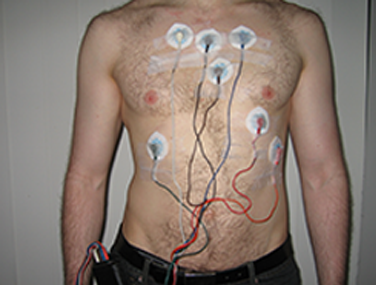Holter Monitor
A Holter monitor is a battery-operated portable device that measures and tape records your heart's activity (ECG) continuously for 24 to 48 hours or longer depending on the monitor used. The device is the size of a small camera. It has wires with silver dollar-sized electrodes that is attached to the skin.
Although some patients may feel uncomfortable about a Holter examination, there is nothing to worry about. No hazards are involved, and it should have little effect on one's normal daily life. The recording device can be worn in a case on a belt or on a strap across the chest. The device may be visible under light clothing, and those wearing a Holter monitor may wish to avoid shirts with a low neckline.
Data storage
Once recording is made, it could be played back and analyzed at 60x speed so 24 hours of recording could be analyzed in 24 minutes. We record an EDF-file onto digital flash memory devices. The data is uploaded into a computer which then automatically analyzes the input, counting ECG complexes, calculating summary statistics such as average heart rate, minimum and maximum heart rate, and other parameters in the recording worthy of further study by the technicians.

Holter Monitor
For further enquiries and appointment please contact with us.